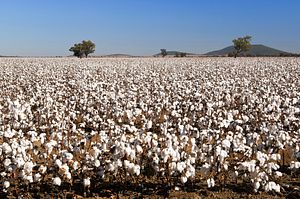While the use of child labor has seemingly dropped in Uzbekistan–the result of heavy international pressure and a coordinated boycott by Western brands–forced adult labor has become more prevalent. Thus, the recent report from the International Labor Organization (ILO), tasked with monitoring for child and forced labor in Uzbekistan, is ambiguous at best.
“White gold” is Uzbekistan’s cash crop–accounting for about 17 percent of its total exports. To put that in perspective, gas accounts for 18 percent of Uzbekistan’s exports. If gas is discussed as a vital resource with geopolitical heft, the same is true of cotton in Uzbekistan. For this reason, international pressure has yielded targeted improvement, especially in child labor. Forced adult labor, however, is much more difficult to identify and eradicate. Children in fields are easy to see, but determining whether adults picking cotton are voluntarily doing so is decidedly more difficult.
The ILO report is a Third Party Monitoring (TPM) report. World Bank projects are subject to various types of monitoring, mostly the government bodies implementing projects and project teams. TPM is an additional type of monitoring which brings in an external party–in this case the ILO–to provide an outside assessment of the project, or in this case, the prevalence of child and forced labor.
The ILO’s verdict is mixed, at best. With regard to labor, the report comments that while the “use of children in the cotton harvest has become rare and sporadic,” the “organized recruitment of adults to pick cotton is widespread.” The ILO highlights an awareness campaign. But the campaign, including briefings and trainings for stakeholders (World Bank jargon that can apply to nearly anyone from citizens to the government), is a project the ILO itself has participated in. Furthermore, the usage rate for a public feedback mechanism introduced this year was low. “A key factor for its future usefulness is the confidence of the public,” the report notes.
Nonetheless, the report says that it did not find “conclusive information that beneficiaries of World Bank projects used child or forced labour during the cotton harvest.”
Going deeper into the report, it becomes clear that uncertainty is the theme. The ILO says its access to sites was good–1,100 sites were visited in World Bank project areas and 9,620 interviews were conducted. But independent monitors have reported repeated harassment, not the least of which is Elena Urlaeva who has been harassed, assaulted and detained numerous times this year for poking around cotton fields. There is also the worrying case of Uktam Pardaev who faces up to 10 years in jail if convicted of extortion and bribery, charges Human Rights Watch say are fabricated. HRW writes that Uzbek authorities are targeting Pardaev, who is “known for his work uncovering local corruption and monitoring the forced labor of adults and children in Uzbekistan’s cotton fields.”
The problem, however, is that those interviewed by the ILO were “circumspect talking to an official-looking group of monitors.” Their responses were guarded and expectedly so, “in such interviews almost no one will directly admit to either being a forced labourer or forcing someone else to work.” Uzbekistan has an established history of heavy-handedness toward those who stray from the path established by Tashkent. Arbitrary arrests of people who argue against the state are well-documented, and HRW says Uzbekistan has thousands of political prisoners in jails where torture is common. Picking cotton is better than torture in jail. HRW and a long list of other human rights organizations wrote a letter to the World Bank regarding the monitoring mission, noting that “The presence of Uzbek government representatives with ILO monitors reduces the likelihood that any citizen will report coercion to the ILO. Citizens reported that they have seen advertisements of a forced-labor complaint hotline but would never use it, because they fear retaliation by officials.”
While the key findings of the report indicate a lack of conclusive evidence of forced labor, the report also states that “These indicators and replies do not by themselves establish without doubt the existence of forced labour, but they do raise questions about the real willingness of pickers to engage in the cotton harvest. They suggest that the risks of forced labour linked to organized recruitment are real.”

































